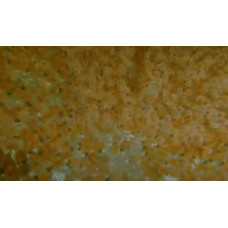The process of emerging from the egg. The hatching period depends on the species of fish and the water temperature. After hatching, the larvae are unable to swim for several days. All this time they feed by ingesting the contents of the yolk sacs. At the end of the incubation period, the fry swim freely and begin to forage for food.
The larval development period begins with the transition of the developing organism to external (exogenous) nutrition. Throughout this period, such an organism has temporary larval organs that are not characteristic of an adult organism (an unpaired fin fold, temporary respiratory organs, etc.), and is therefore called a larva. At the beginning of this developmental period, the larva has remnants of egg yolk and a fat droplet, and for some time it feeds on both these stocks and on live food. The larva then switches completely to external feeding. During the larval development period, the main relationships with the external environment are hydrological and nutritional.
Hatching fish embryos
Tags: Hatching fish embryos



